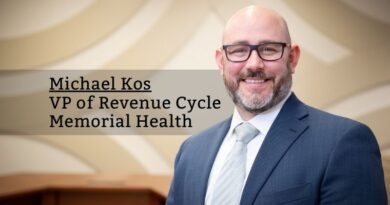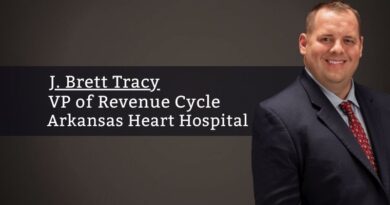Revenue Boosting Strategies to Implement this New Year, 2024
By Anneleah Williams-Bridges MS, RHIA, CCS, CCS-P, CCDS, RH-CBS, ACDIS Leadership Council, AHIMA Approved ICD-10 Trainer
Hospital executives and leadership are actively seeking ways to increase revenue flow and optimize their organization’s bottom line. We will explore five essential revenue-boosting strategies that hospitals can employ to further increase their revenue in 2024. These strategies focus on optimizing existing resources, improving patient satisfaction, mid-revenue cycle improvement, and exploring new revenue streams.
The first revenue-boosting strategy is to ramp up Clinical Documentation Integrity (CDI) reviews. CDI reviews play a crucial role in ensuring accurate and comprehensive documentation of patient care. If resources allow, consider expanding CDI reviews to other areas of patient care. Your organization may identify potential gaps in documentation that are not currently addressed, resulting in write-offs and preventable denials. An important element commonly missed in the CDI process is fostering a collaborative and transparent culture between the hospitalists and the CDI program. Sharing findings regularly with providers through education will better support best practices and clear concise documentation within the medical record. CDI efforts not only improve coding accuracy but also ensure that the hospitalists capture all relevant diagnoses and procedures, leading to appropriate reimbursement. Encouraging open communication and interdisciplinary teamwork can lead to more efficient workflows, reducing errors and enhancing overall patient care.
By incorporating these elements into the overall revenue-boosting strategy, hospitals can foster a resilient and adaptive healthcare environment, ensuring both financial sustainability and exceptional patient care.
The next strategy involves increasing clean claims through proactive quality assurance initiatives and second-level reviews. Challenging Diagnosis-Related Groups (DRGs) such as sepsis, cardiology, and mortality cases often require careful coding to accurately reflect the complexity and severity of the patient’s condition. Educating your coding team on how to accurately and consistently code these challenging cases could increase your clean claim rate. Some of my favorite ways to do this is through a coding huddle (generally a 5-10 minute huddle in the morning or start of the week) and coding newsletters (generally one page of vital tips). In addition, conducting second-level reviews for challenging DRGs can help identify coding inaccuracies or missed opportunities for appropriate reimbursement. The findings from second-level reviews should also be shared with the coding team for education. Hospitals can minimize claim denials and maximize revenue by ensuring coding accuracy.
Moreover, optimizing the utilization of existing resources. Hospitals can analyze their current capacity and identify areas where they can increase patient volume without compromising the quality of care. This could involve streamlining processes, improving efficiency in scheduling and patient flow, and maximizing the utilization of equipment and facilities. By effectively managing resources, hospitals can increase their revenue by accommodating more patients and reducing wait times. Another important aspect to consider is patient satisfaction. Satisfied patients are more likely to return to the hospital for future healthcare needs and recommend the hospital to others. By providing exceptional patient experiences, hospitals can build loyalty and attract new patients, ultimately leading to increased revenue. This can be achieved through various initiatives, such as improving communication with patients, enhancing the quality of amenities and services, and implementing patient-centered care models.
Furthermore, hospitals can explore new revenue streams by expanding their service lines or introducing innovative healthcare offerings. Conducting market research and analyzing the needs and preferences of the local community can help hospitals identify potential areas for growth. For example, if there is a high demand for specialized services such as orthopedics or cardiology in the community, hospitals can consider investing in these areas to capture a larger market share and generate additional revenue. Additionally, hospitals can explore partnerships and collaborations with other healthcare providers or organizations to expand their reach and offer comprehensive care. This could involve affiliating with outpatient clinics, home healthcare agencies, or specialty centers. By creating a network of integrated services, hospitals can attract a broader patient base and increase revenue through cross-referrals and shared resources. Hosting community outreach programs and events will also help bring awareness to new and existing service lines and partnerships, engaging the community and attracting new patients.
Lastly, technology can play a significant role in revenue optimization. Implementing electronic health records (EHRs) and revenue cycle management (RCM) systems can streamline administrative processes, reduce errors, and improve billing and reimbursement efficiency. These systems can also provide valuable data and analytics that help hospitals identify trends, monitor performance, and make informed decisions to optimize revenue. It is important to note that while focusing on revenue optimization, hospitals must also prioritize patient care and quality outcomes. The ultimate goal should be to provide excellent healthcare services while ensuring financial sustainability. Striking a balance between revenue generation and patient-centered care is crucial to maintain the trust and loyalty of patients and the community.
In conclusion, hospitals have several strategies to increase revenue this new year and beyond. By incorporating these elements into the overall revenue-boosting strategy, hospitals can foster a resilient and adaptive healthcare environment, ensuring both financial sustainability and exceptional patient care. Hospitals can maximize their revenue potential by optimizing existing resources, improving patient satisfaction, maximizing mid-revenue cycle, exploring new revenue streams, leveraging technology, and maintaining a focus on quality care. It is essential for hospital executives and leadership to continuously evaluate and adapt their revenue enhancement strategies to meet the evolving needs of the healthcare industry and the communities they serve.



